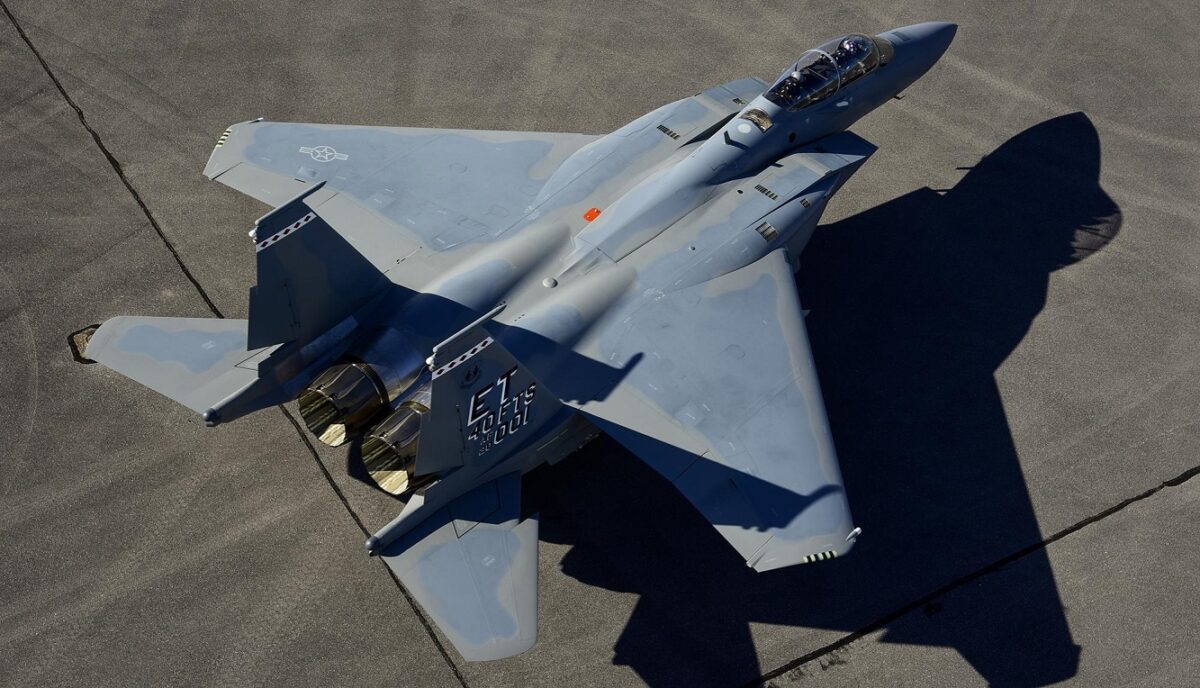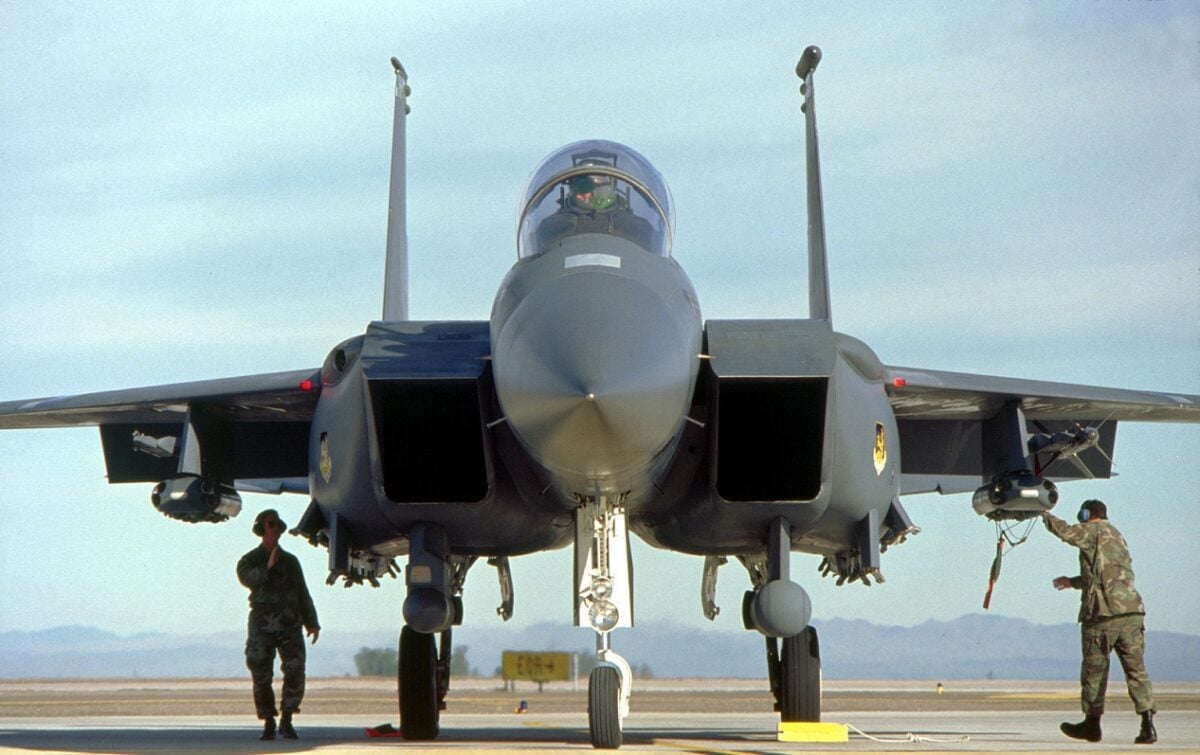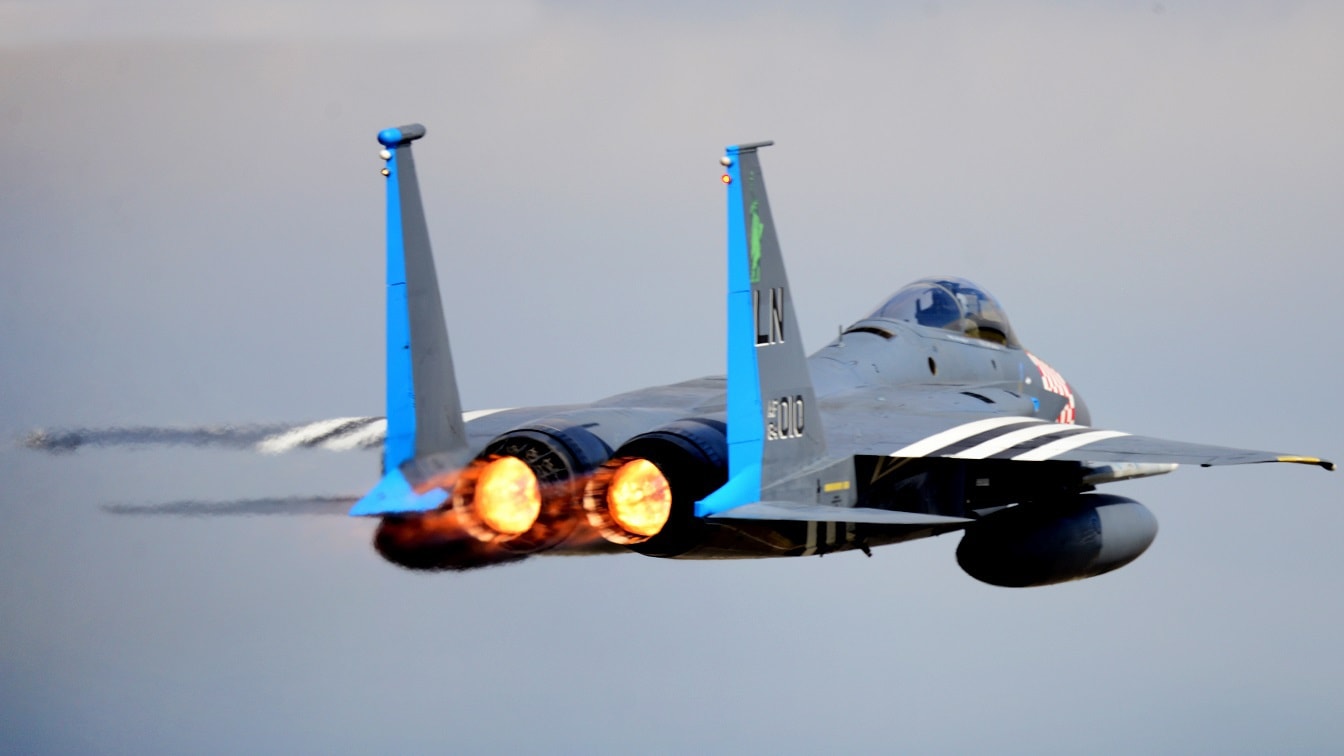One of the most legendary fighter jets in the U.S. Air Force is nearing the end of its lifetime. On the closing days of 2021, the Air Force Weapons School held its final course for the F-15C Eagle fighter jet.
But as the “C” version of the F-15 fighter jet phases out, there is a new aircraft waiting in the wings.
F-15C: The Last Course
The instructors and students of the F-15C 21-B Weapons Instructor Course were the last ever participants in a course that had been going for 44 years. The F-15C first entered service in 1979, but Air Force pilots had already been training on the platform since 1978.
“I love the F-15C. We always brag about the record of 104-to-zero and that is predominately based on the fact that we have the air superiority fighter. I don’t want it to die, but we have to move on, because if we continue to rest on our laurels, it’s going to make the fight that much harder for us,” Major Rodolfo Cruz, the director of operations for the 433rd Weapons Squadron, said in a press release.
Cruz was one of the last five Weapons Instructor Course instructors for the F-15C.
The final course was a little special. On the emotional side, the instructors and students knew that they were part of history. But on the practical side, the students knew that they would be the last to be trained on the advanced offensive and defensive tactics of an aircraft that is still flying and will be flying for at least a few years more. That means that they have to retain and pass that knowledge on the line squadrons without the option of going back to the classroom.
“We spent a little bit more time on the critical thinking concept rather than finessing the individual [F-15] Eagle execution that they should already know. We had to think about how we as the Weapons School think about problems, so that when the graduates go out into the Combat Air Force, they can think about the problems in the same manner,” Cruz stated.
The F-15C is a single-seat variant of the F-15 Eagle. First introduced in 1979, the air superiority fighter jet went on to have an incredible career in several air forces. To this day, the different variants of the F-15 has achieved 104 air-to-air kills in combat without ever losing one of their own. Almost 500 F-15Cs were built, and the major upgrades the version introduced was more internal fuel, the option to carry more weapons, and a better central computer.
“We are having to pivot as an Air Force. We train against the current threats and to be ready in case we need to employ. The baseline threat has changed so much, and the ranges at which people are shooting and dying in air-to-air war have increased so significantly over the last 20 years, it is pretty incredible,” Major Michael Tope the class leader of Weapons Instructor Course 21-B, said. “The F-15 has some advances, but it’s still the F-15 from the 1970s in a lot of ways. That speaks to the capabilities of the maintainers and the people who have worked on the jets, as well as the instructors who have developed different tactics.”
The Air Force hasn’t announced the retirement year of the F-15C but it should come sometime in the mid-2020s. But the aircraft that is intended to replace the legacy fighter is almost ready to go.
The F-15EX Eagle II
The Air Force is currently conducting final testing for the F-15EX Eagle II aircraft. The F-15EX is a 4,5 generation air superiority fighter jet that came into the picture out of necessity. The Air Force’s fifth-generation stealth fighter (F-22 Raptor and F-35 Lighting Strike II) are either too few, in the case of the Raptor, or too expensive to operate, in the case of the F-35.

F-15EX Fighter. Image Credit: US Air Force.

Staff Sgt. Dave Smith and Senior Airman John Pusieski from the 58th Operational Support Squadron, 58th Fighter Wing, peform last-minute checks and arm practice bombs on an F-15E Eagle aircraft from the 461st Fighter Squadron.
So, the Pentagon came up with the solution of creating a new “old” aircraft to bridge the gap between its most modern fighters and the legacy fourth generation fleet of aircraft, such as the F-16 Fighting Falcons and variants of the F-15.
1945’s New Defense and National Security Columnist, Stavros Atlamazoglou is a defense journalist specializing in special operations, a Hellenic Army veteran (national service with the 575th Marine Battalion and Army HQ), and a Johns Hopkins University graduate.

